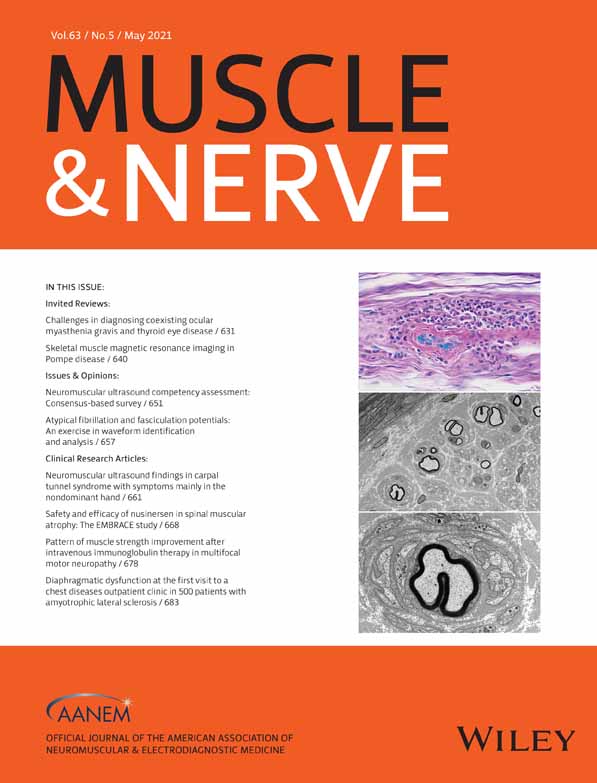Atypical fibrillation and fasciculation potentials: An exercise in waveform identification and analysis
Abstract
No consensus criteria exist for recording and analyzing waveforms in clinical electromyography (EMG). There have been significant technical improvements in recent decades that are under-used in both routine practice and research. In current practice, disciplined techniques in acquisition and analysis of signals are required to appropriately define them. As an example, we describe such an exercise in acquisition and analysis. During a routine study, atypical spontaneous activity was encountered. High-quality digital recordings were stored for off-line analysis. These revealed waveforms that could be isolated and quantitatively defined using basic instrumentation available on most modern EMG systems: “slow” firing fibrillation potentials and a repeating fasciculation potential. Subjective analysis alone could not have identified them. To improve accuracy in identification and understanding of these waveforms, we propose criteria for data collection and signal analysis. This is critical for quality in routine practice, education, and proper reporting of electrophysiological signals.
CONFLICT OF INTEREST
The second author is an employee of Natus Medical Inc. Neither author has a conflict of interest to disclose.
Open Research
DATA AVAILABILITY STATEMENT
Data available on request from authors




